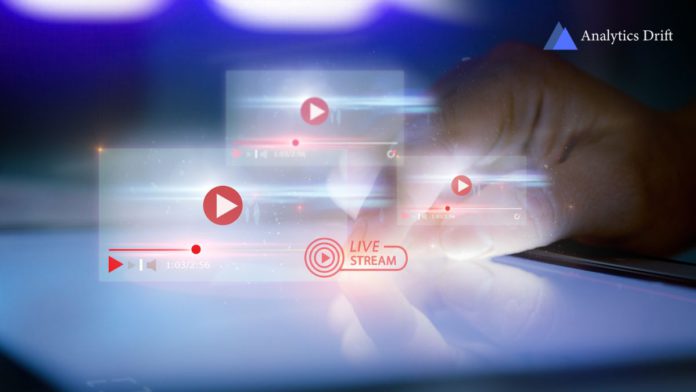RTMP, or Real-Time Messaging Protocol, stands as a stalwart communication protocol designed for transmitting audio, video, and data in real-time over the internet.
At its core, RTMP operates on a client-server model, facilitating the transmission of multimedia data between the two. Developed by Macromedia, now a part of Adobe, RTMP has become synonymous with low-latency, high-quality streaming.
RTMP Basic Principles:
• Real-Time Transmission: Optimized for low-latency delivery, ideal for live streaming applications.
• Bidirectional Communication: Enables dynamic data exchange between server and client, enhancing streaming experience.
• Adaptability: Compatible with various multimedia formats, suitable for live video broadcasts, online gaming, and interactive web applications.
• Efficient Data Transfer: Optimizes bandwidth use while maintaining high-quality video and audio streaming, ensuring smooth, uninterrupted content delivery.
How RTMP Works
RTMP operates on a robust technical architecture that facilitates the seamless transmission of multimedia data. At its core, the protocol relies on a client-server model. The client, often an encoder or camera capturing the content, communicates with the server, responsible for processing and distributing the data. This architecture ensures a structured and efficient flow of information, paving the way for real-time streaming.
Key Components: Encoder, Server, and Player:
Encoder: The journey begins with the encoder, a crucial component responsible for capturing and compressing the multimedia content. This encoded data is then sent to the RTMP server for processing.
Server: The RTMP server acts as the intermediary, receiving the encoded data from the encoder. Its role involves managing the distribution of the content to multiple clients, ensuring a smooth and synchronized streaming experience.
Player: On the receiving end, the player decodes and renders the transmitted data for the end-user. Whether it’s a viewer watching a live stream or engaging with on-demand content, the player plays a pivotal role in delivering the multimedia experience.
Advantages and Challenges of RTMP
Here are some advantages of RTMP streaming:
- Low Latency: RTMP excels in low-latency streaming, making it ideal for applications where real-time interaction is crucial. This attribute is particularly valuable for live broadcasts, gaming, and interactive online events, enhancing the viewer’s experience by minimizing delays.
- Versatility and Compatibility: RTMP supports a wide range of multimedia formats, making it versatile for various content types. Its compatibility with different devices and platforms ensures that content creators can reach a diverse audience without worrying about compatibility issues.
- Bidirectional Communication: The bidirectional communication capability of RTMP allows for interactive data exchange between the server and the client. This is particularly advantageous for applications requiring user engagement, such as live chat during streaming or interactive online sessions.
- Efficient Bandwidth Usage: RTMP optimizes bandwidth usage efficiently, ensuring high-quality video and audio streaming without causing undue strain on network resources. This efficiency is essential for delivering smooth and uninterrupted content, even in varying network conditions.
Here are some challenges of RTMP streaming:
- Limited Support for HTML5: While RTMP has been a longstanding protocol, its compatibility with modern web standards, particularly HTML5, can be limited. This has led to the development of alternative streaming protocols that better align with the capabilities and security features of HTML5.
- Resource Intensive: The RTMP protocol, particularly when used with Flash-based players, can be resource-intensive. As Flash is phased out in modern browsers, the need for alternative solutions arises, impacting the way RTMP streams are accessed and delivered.
- Emerging Streaming Protocols: With the emergence of newer streaming protocols like WebRTC and MPEG-DASH, RTMP faces competition and potential obsolescence in certain use cases. Content creators may need to assess the evolving landscape and consider adopting more modern streaming solutions based on specific requirements.
Applications of RTMP Streaming
Live Events and Broadcasting:
RTMP finds its zenith in live events and broadcasting, delivering an unparalleled platform for concerts, sports events, and news broadcasts. Its low-latency capabilities ensure that viewers experience events in real-time, fostering an immersive and interactive connection between content creators and audiences.
Gaming and Esports:
Gamers leverage RTMP to livestream gameplay on platforms like Twitch and YouTube, enabling real-time interaction with their audience. This not only enhances the gaming experience but also creates a vibrant community around the content.
E-Learning and Webinars:
RTMP has become an essential tool in the education sector, facilitating live streaming for e-learning platforms and webinars. Teachers and presenters can engage with students or participants in real-time, creating a dynamic and responsive virtual learning environment.
Surveillance and Security:
For security and surveillance applications, RTMP ensures the real-time transmission of video feeds. This is crucial for monitoring critical areas, enhancing situational awareness, and providing timely responses to potential threats.
Best Practices for Securing RTMP Streams
Implement RTMPS Encryption:
Secure your RTMP streams by employing RTMPS (Real-Time Messaging Protocol Secure), which adds an extra layer of encryption to safeguard the transmitted data against unauthorized access.
Access Control Mechanisms:
Enforce strict access controls and authentication mechanisms on your RTMP server to ensure that only authorized users or devices can initiate or receive streams, preventing potential security breaches.
Regular Security Audits:
Conduct routine security audits on your RTMP streaming infrastructure, identifying and addressing vulnerabilities promptly. Regular assessments help fortify your system against emerging threats and ensure a robust security posture.
Conclusion
RTMP stands as a stalwart, offering low-latency, versatile solutions for real-time multimedia delivery. Its advantages in interactive content, low latency, and efficient bandwidth usage are commendable. However, as technology evolves, challenges such as security concerns and competition from emerging protocols highlight the need for ongoing adaptation and consideration of alternative streaming solutions for future-proof content delivery.


